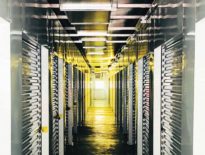Bustling cities today no longer have one central location. Historically, Back Bay and downtown were the places to be in Boston, but now there are multiple anchors throughout the region that are all competing with one another as highly sought-after places to live and work.
Areas like the eastern Seaport and Drydock, Allston-Brighton, Cambridge, Somerville and the Fenway are becoming new epicenters, making the Greater Boston area truly polycentric with many distinct and desirable destinations – and it won’t stop there.
Many may perceive Boston as having limited land for new development given its density and lack of available parcels, but contrary to common belief, that is not the case. There is a major influx of commercial tenants who want to establish a home base somewhere unique, perhaps just outside of the traditional central business district, because of public transit, value and the opportunity to be a catalyst of growth.
As the real estate community pursues Boston’s next frontiers for development, attracting businesses willing to be early adopters, will rely on collaboration with public and private organizations, a commitment to establishing a sense of place and the foundation of a true urban ecosystem. As developers have experienced in the city’s newly established and flourishing neighborhoods, partnering with public entities is becoming more and more of a necessity.
Transit Holds Promise
In the Seaport – not that long ago just a sea of parking lots – 121 Seaport, now home to Alexion and PTC, was built over the Silver Line, a complex construction and engineering feat in coordination with the MBTA.
Just last year in the Drydock area, we entered into a ground lease with the Economic Development Industrial Corporation to develop Two Drydock, a 13-story, 230,000-square-foot, class A, flexible office building that is attracting companies to this new innovation cluster.
NB Development Group, an affiliate of New Balance Athletics Inc., has also built out Boston Landing, an expansion to their corporate campus in Allston-Brighton. The development expanded transit access for the area through a public-private partnership that created the first new commuter rail station in Boston in more than 50 years. And they raised standards in the process, as the first transit project in Massachusetts to receive an Envision sustainable infrastructure award.
New transit-oriented development holds great promise for the region’s future. Just look to Federal Realty’s Assembly Row in Somerville. This lively destination, which is now easily accessible via the Orange Line, was once home to neglected industrial buildings and brownfields, obstructed views of the Mystic River and offered zero public transit connections.
Look again to Allston-Brighton. The vision for the Interstate 90 reconstruction includes the creation of West Station, infrastructure that will no doubt unlock even more opportunity. For perspective, when completed this effort will result in a neighborhood that is roughly three times the size of the Seaport.
A Place for Early Adopters
Seaport Square welcomed its first new wave of tenants nearly 10 years ago. Following the first few companies, including PwC and Vertex, many flocked to the waterfront neighborhood and more continue to relocate there.
The neighborhood’s many amenity-filled buildings, which are surrounded by activated public and green spaces, have attracted global companies, which have helped cement a solid reputation for the district. This image has inspired other companies (including Amazon, GE, PTC and Alexion) to follow suit and become part of the Seaport’s energy.

Russell DeMartino
To attract companies that will serve as catalysts for a new neighborhood, new buildings must be innovative and unique, but also authentic to that place. Distinctiveness is often established through design, robust amenities, tenant engagement apps, coworking and collaborative spaces, fitness centers, retail, outdoor space and creative programming.
At Two Drydock, we worked closely with SGA to deliver an industrial-inspired design with a façade composed of a mix of corrugated and smooth sheet metal, fiber cement siding, anodized steel and glass. One hundred and fifty parking spaces were placed on floors two through four to allow for future office repositioning and an increase in ride-sharing vehicles. The building’s state-of-the-art fitness center and meeting space is on the top floor, often one of the highest rent–producing locations in the building. In this case, the stunning views of this amenity floor act as a value generator for the businesses who will be the tenants and guests of the building.
Innovative buildings that can accommodate change and evolve with new technologies and trends will have longer lives than those that do not. In order to hit the ground running on a development in one of the region’s next frontiers, it is vital to create outstanding environments that attract the people, companies and organizations that fuel sustainable growth.
Russell DeMartino is executive vice president and leader of Skanska USA Commercial Development in Boston.




 |
| 

